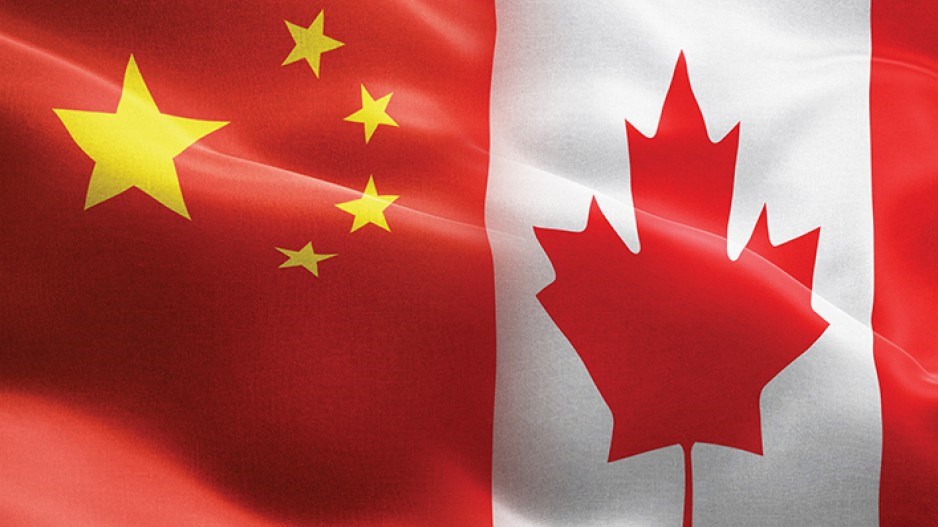While Canadian exporters looking at the U.S. market continue to wait on the exact nature of the reopening, the picture is clearer – though not much brighter – for those looking at China.
That’s because China, where the COVID-19 outbreak in January caused its first shutdown of a major global economy, has since been gradually reopening, culminating in the disease epicentre in Wuhan reopening earlier this month.
The concern now, said one Chinese economist familiar with the B.C. situation, is that Beijing’s worries about a second wave of COVID-19 have prompted China to ban foreign citizens from entering the country. The rule was announced in late March after China reported COVID-19 cases returning to the country by way of travellers from Russia into the northern Chinese province of Heilongjiang. That means that in-person business meetings – vital for securing deals in the Chinese market – simply isn’t possible right now, said Bo Chen, professor of economics at the Huazhong University of Science and Technology.
“Because of the pandemic, China was in a serious situation two months ago, and the world closed its doors on China,” Chen said. “Now, we are seeing the reverse of China closing its doors to foreign visitors. This is actually a big problem for the investment community; and it has led to a big drop in both foreign and domestic investment, because domestic investors also cannot travel across regions before the reopening happened for most of the country in March.”
Beijing has tried to mitigate the situation by moving investment project details and contacts online.
Officials are also now encouraging domestic investors to step up as road and rail travel within China returns to normal patterns.
As for potential for imports from B.C. and Canada, Chen said the numbers will definitely be ugly for the months of March, April and May as the Chinese limit inbound international traffic.
“Our trade data for Q1 was relatively fine,” Chen said, even though the country saw its GDP fall 6.8% during that period. “Our exports were down 11.4%, but our imports are down only less than 1%…. But I have to make myself clear: The reason that I think imports in Q1 were not affected was because it was Q1. Before April, the seriousness of the pandemic had just begun to affect other countries. I think once we get the data after April, we will see an inverse picture.”
Chen noted, however, that the tried-and-true Canadian exports such as seafood and agricultural goods are probably the best bet to recover faster in the Chinese market, especially if the global pandemic subsides and allows for more travel and business to be conducted across borders.
But even the agricultural sector may not face a bright prospect in China’s reopening, said Canada West Foundation Trade & Investment Centre director Carlo Dade. The main problem is the U.S.-China Phase 1 trade agreement that was announced in January, which gives a heavy advantage to U.S. producers of products like beef in the Chinese market.
For example, Dade said, the deal allows the U.S. Food and Drug Administration to give a list of U.S. beef plants to Beijing and demand that China, at short notice, take imports from these plants.
That’s not the case for Canada, which traditionally would submit a list of potential plants to Beijing, in hopes that it would agree to order from one or more of them.
“The Americans have basically handcuffed the Chinese’ ability to impose non-tariff barriers on U.S. agricultural products, and nowhere is that clearer than beef,” Dade said. “It’s not, ‘You send us a list and we’ll get back to you,’ but ‘We’re going to tell you from which plants you will take our beef, and we’ll tell you how quickly you have to approve them, no questions, no changes.’ So you can see the huge advantage the U.S. has in moving beef to China. You have certainty with a U.S. producer that it’s not going to be stopped by red tape.”
Dade added that Canada earned some goodwill by sending medical supplies to China earlier in the pandemic, but he is uncertain if it will carry over onto issues like red meat or canola. •
This story is part of a series on the next steps for B.C. businesses across a wide range of sectors as the province edges closer to the easing of COVID-19 safety measures. Check out all previous stories in this series, and stay tuned for further stories being published throughout this week.
Previous stories in the series:
B.C.’s road to recovery: Restaurant reopenings could start in May
B.C.'s road to recovery: Province’s fashion retailers face multiple barriers
B.C.'s road to recovery: Big energy projects await return to full power
B.C.’s road to recovery: Pandemic could usher in online era of property sales
B.C.'s road to recovery: Public confidence is key to B.C. tourism resurgence
B.C.’s road to recovery: Smaller crews, higher costs face post-pandemic film industry
B.C.’s road to recovery: Post-secondary schools focus on the fall
B.C.’s road to recovery: Governments peer anxiously at post-COVID-19 horizon
B.C.'s road to recovery: Stores envision phased retail reawakening
B.C.'s road to recovery: Personal care sector to remain six feet from normal
B.C.'s road to recovery: No easy road back for Canadian exporters




